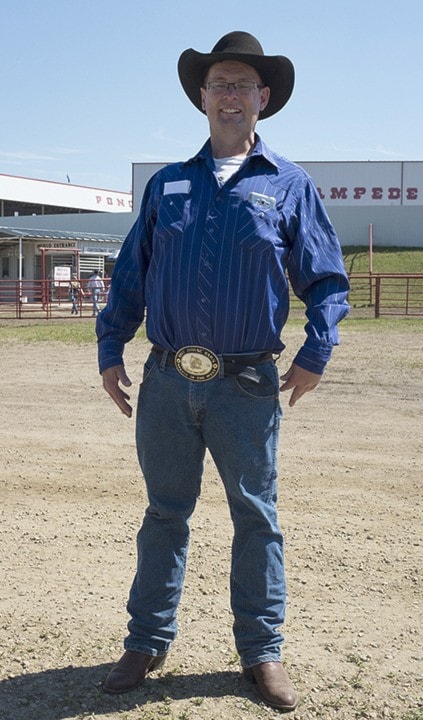It was just like any other rodeo. In 2002 Curtis Anderson was a bull rider ready to make his eight-second ride at the Ponoka Stampede but in those short eight seconds the bull and his head connected twice resulting in a brain injury that changed his life forever.
“I lost my balance. My head hit the bull’s head twice and I received a traumatic brain injury,” said Anderson.
At the time, Anderson was like most bull riders; he wore a cowboy hat rather than helmet. A lot has changed since then and it’s hard to find a bull rider who will wear a cowboy hat over a helmet. Anderson’s hope is to continue to advocate the use of helmets in reducing brain injuries.
His recovery has been a constant upward climb but each year is better than the last. Shunts in his head to reduce swelling, a drug induced coma for some weeks and two nurses to help him get out of bed were just some of the challenges Anderson faced after the injury.
Family and friends were integral for Anderson on his road to recovery and he credits loved ones for helping him improve so much. “There was someone to talk to no matter the highs and lows.”
“While in the wheelchair I started to walk again, first with the quad-cane and then with a single cane,” he explained.
After walking with a helmet to ensure he was protected, Anderson worked on several aspects of his recovery; writing, speaking, walking and now he can cut his own steak and tie his own hockey skates. “I’m still getting better to the day.”
“You’ll keep getting better if you want to,” said Anderson.
He spends much of his time advocating the use of helmets at rodeo events but also hockey or other sports such as bike riding and ATVs. The response has been positive. Parents have come up to Anderson thanking him for his life-lessons. He reminds people that taking the time after a concussion to heal up is equally as important as wearing a helmet.
“The best way to heal a concussion is rest because your brain heals when you rest and if you keep going back too soon, your brain, it bruises easier and easier all the time and it doesn’t take as much of a hit to get a concussion,” said Anderson.
“There’s a lot of (hockey) players that had to shut it down completely because of concussions.”
Anderson continues to advocate at clinics and other sporting events to raise awareness of head safety and brain injuries while also being a cowboy poet.
